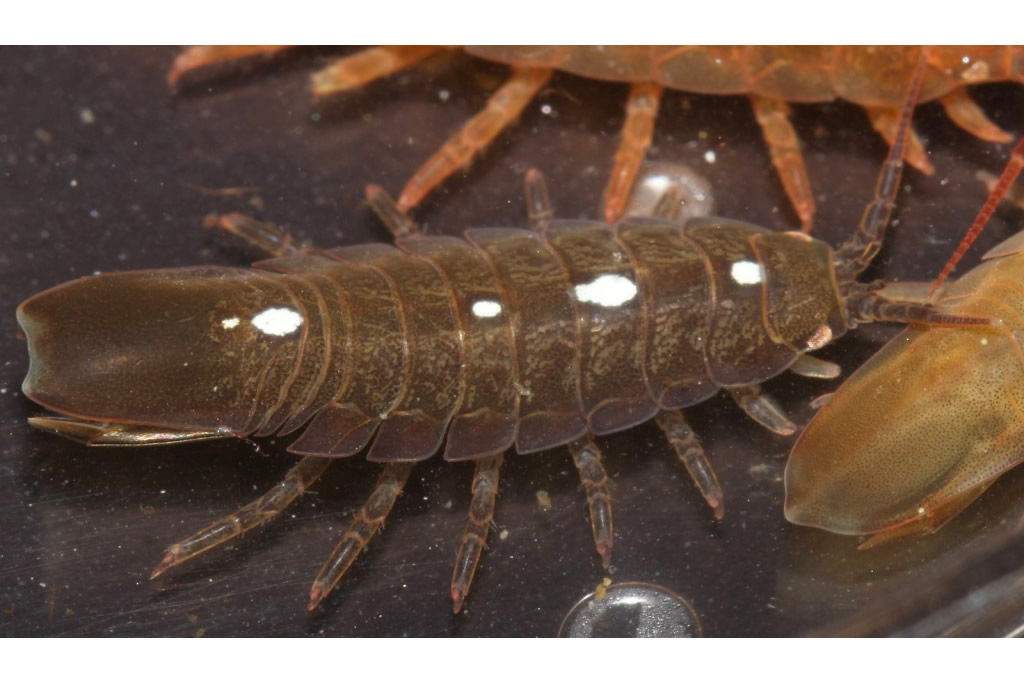Idotea emarginata (Fabricius, 1793)
Status:
Native
ID Difficulty
Identification
Idotea are relatively large, conspicuous and common marine isopods with oval or oblong bodies. Although they often have striking colours and patterns, these are not particularly useful for distinguishing between the various species. Rather, identification should be based on characteristics of the antennae, the coxal plates and the pleotelson.
Males of I. emarginata grow up to 30 mm in length, whilst females reach 18 mm. The most obvious diagnostic characteristic of this fairly broad species is the emarginate posterior border to the pleotelson, though this may be absent or less obvious in juveniles. The antennules extend beyond the third segment of the peduncle, whilst the coxal plates are broad, extending from the front to the back of pereonites 2 or 3 to 7. Body colouring and patterning vary.
Distribution and Habitat
Not uncommon amongst washed up seaweed and under stones in the intertidal zone, and swimming in shallow water over sand. Found all around Britain and Ireland.
References
Naylor, E. & A. Brandt. 2015. Intertidal Marine Isopods. Synopses of the British Fauna (New Series), No. 3. Field Studies Council, for The Linnean Society of London.




